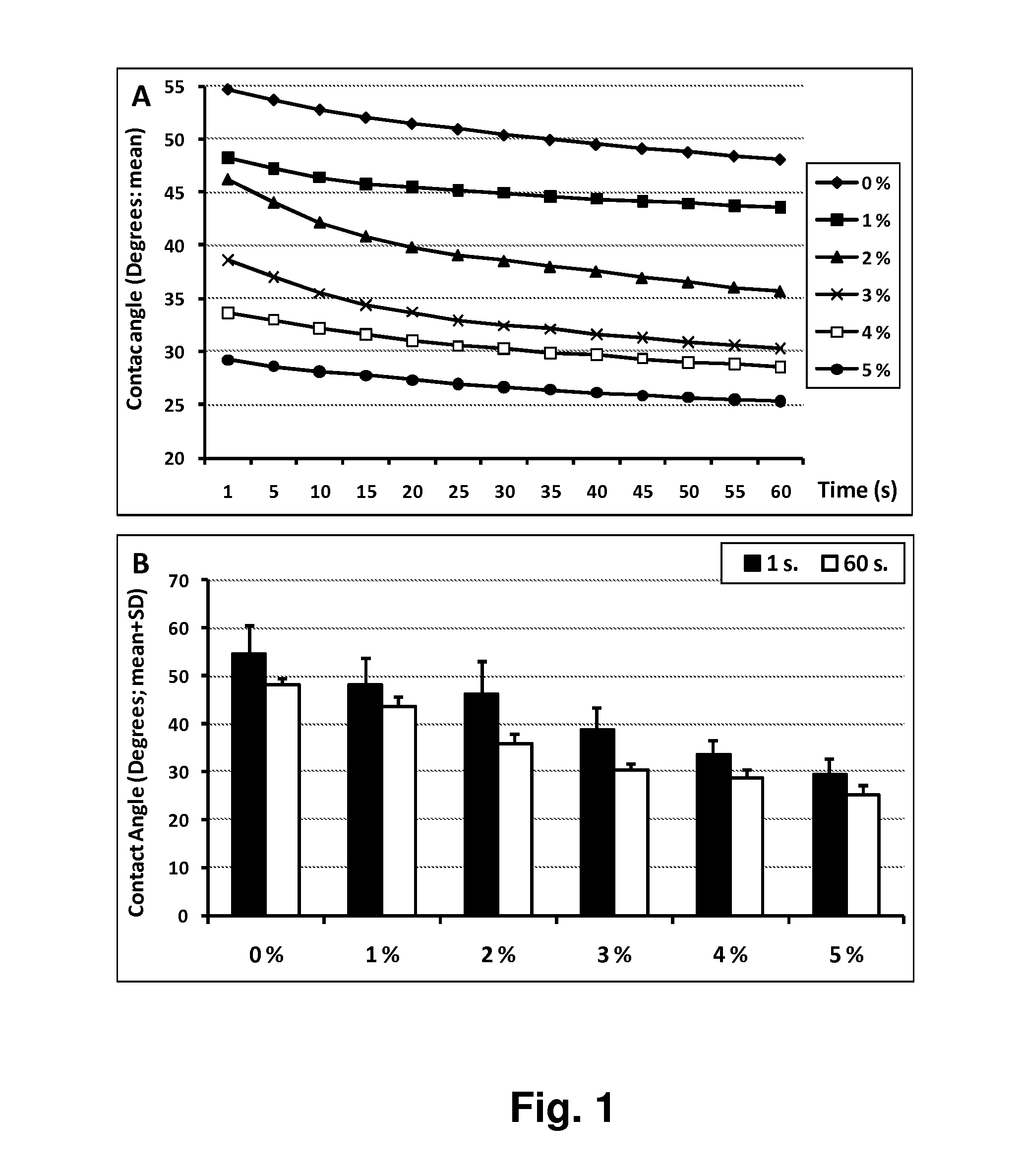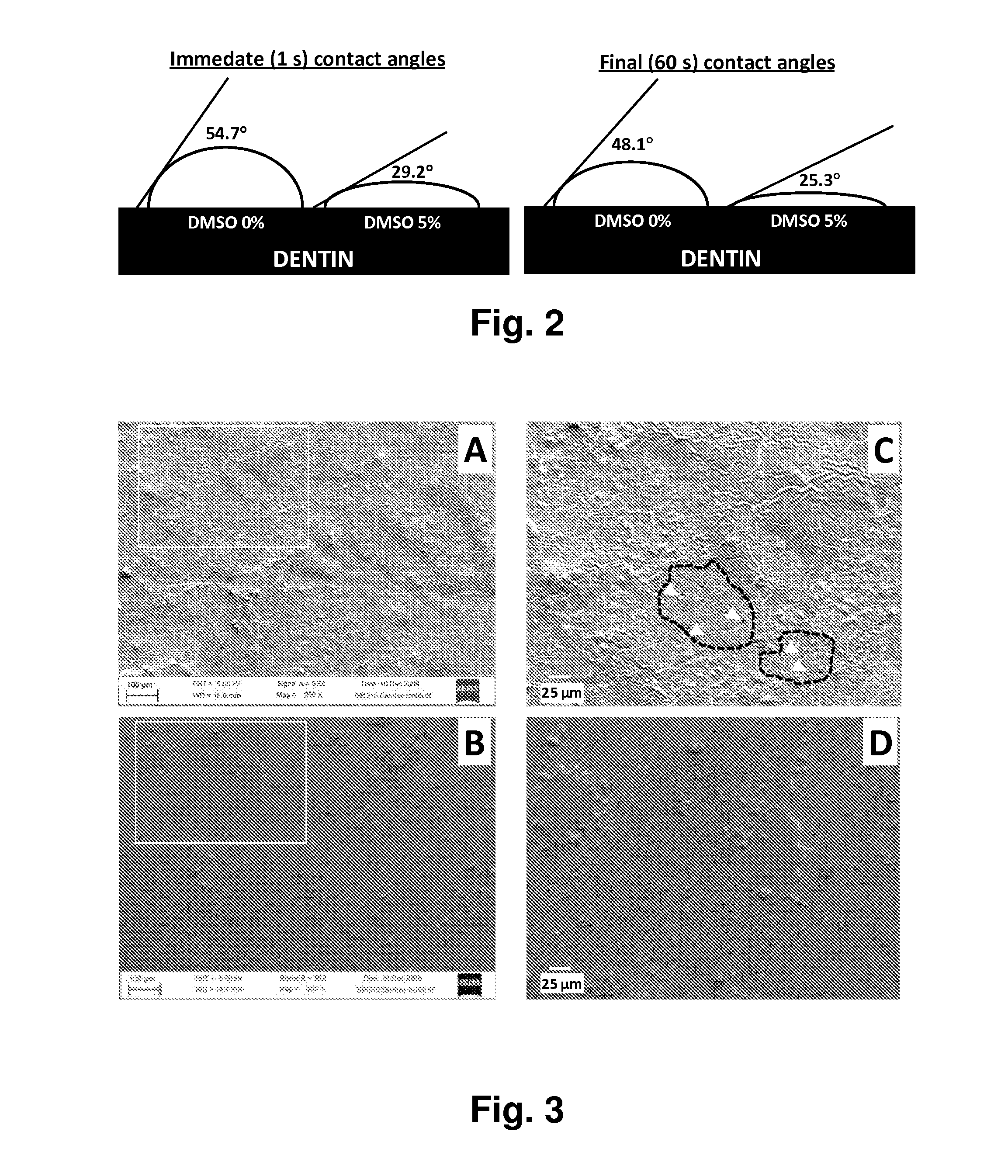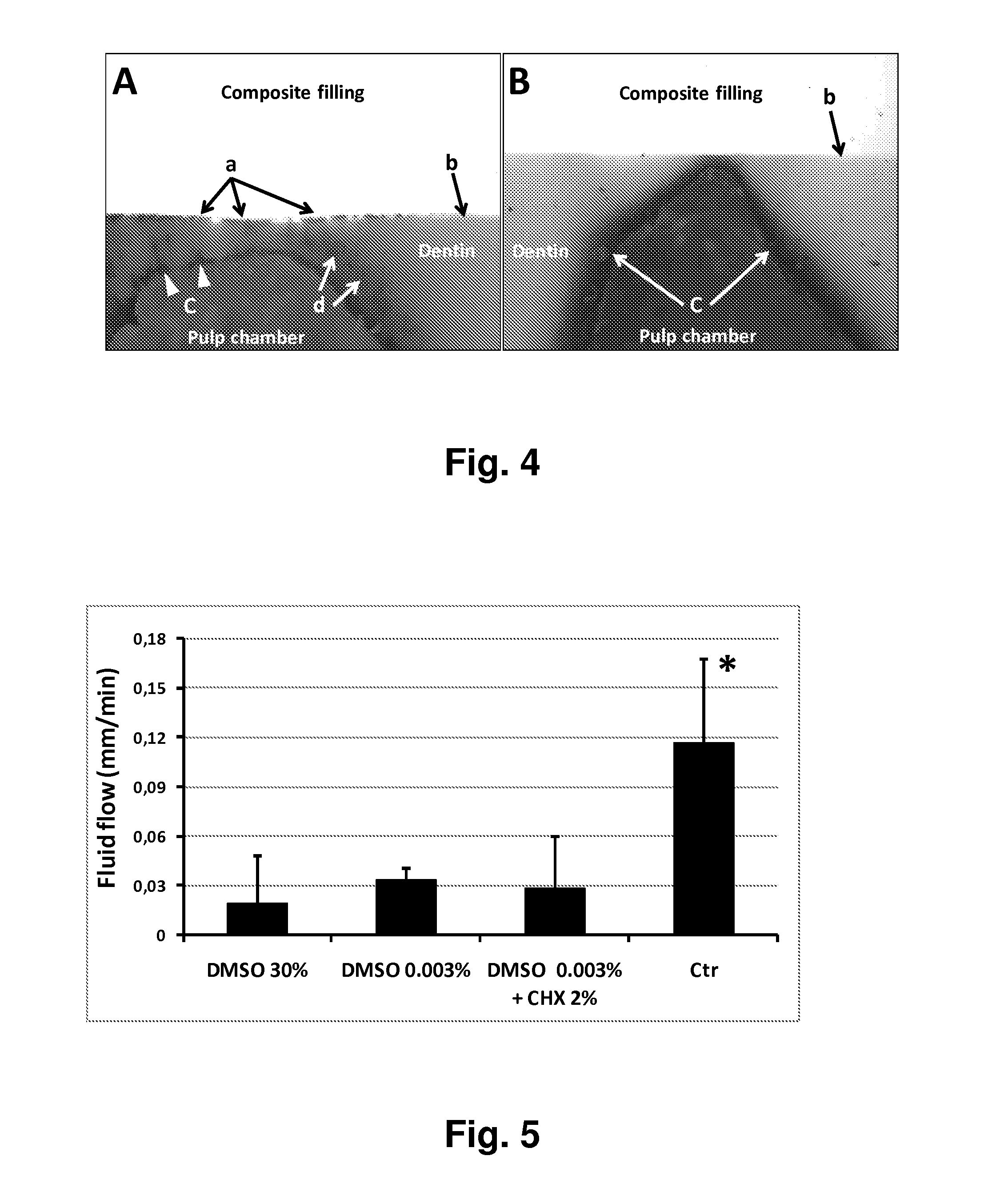Method for Improving Penetration or Long Term Adhesion of Compositions to Dental Tissues and Compositions Usable in Said Method
- Summary
- Abstract
- Description
- Claims
- Application Information
AI Technical Summary
Benefits of technology
Problems solved by technology
Method used
Image
Examples
example 1
Contact Angle Measurements
Materials and Methods
[0115]To minimize variation between samples all measurements were conducted using the following series of procedures: (1) the dentin surface was sanded using 500 grit abrasive sandpaper to produce consistent smooth surface; (2) etched with phosphoric acid etchant (Scotchbond Etchant, 3M ESPE) for 15 to achieve a uniform, smear layer-free dentin surface; (3) rinsed with deionized water for 15 s; (4) the dentin surface was exposed to deionized water with 0% (control), 1%, 2%, 3%, 4% or 5% (vol) DMSO in deionized water for 60 s; (5) the dentin surface was dried with filtered air for 60 s; (6) contact angle measurements were conducted using deionized water.
[0116]Six intact human third molars were used after extraction from students at the university health center as a part of their dental treatment. The teeth were stored in 2% sodium azide at +4° C. until preparation. The occlusal enamel surface was cut off with a precision saw, exposing th...
example 2
Adhesive Penetration
Materials and Methods: SEM Analysis
[0119]After acid etching, the control sample was left slightly moist, as described in the instructions of the adhesive used; experimental sample was slightly dried with compressive air, rewetted with 30% DMSO and left slightly moist as with control sample. Then the adhesive (SB1, 3M ESPE) was similarly applied to both surfaces, solvent was evaporated with compressed air for 15 s, and the adhesive was light cured. Half of the samples were left unfilled to examine the adhesive layer on the dentin surface. Half were restored with a 2-mm layer of composite (Filtek Supreme XT, 3M ESPE) and light-cured, then cut perpendicular to the filled surface to expose the hybrid layer. The cut surfaces were then treated with phosphoric acid for 15 s and NaOCl for 5 min to remove the smear layer and expose the dentin-adhesive interface. All the samples were then dehydrated in the increasing series of alcohol, sputtered with gold, and subjected to...
example 3
Microtensile Bond Strength Testing
[0130]Since all the data indicated better replacement of water and improved penetration of adhesive into the hybrid layer and underlying dentin, microtensile bond strength evaluations were performed to examine whether the effect would also be seen in the bond strength.
Materials and Methods
[0131]The teeth (five to eight teeth per group, depending on the experiment) were sectioned under water cooling coronally to remove occlusal enamel and to expose flat dentin surface, and at the dentin-enamel junction. Exposed dentin surface was ground with 180-grit abrasive paper to create uniform smear layer. In the control samples, the adhesives were used as recommended by the manufacturer. Briefly, with self-etch adhesives in control group, the surface was scrubbed with water using extensively moist cotton pellet, gently dried to leave the dentin surface slightly moist, and then the dentin surfaces were treated first with primer and then with adhesive; in the ex...
PUM
| Property | Measurement | Unit |
|---|---|---|
| Fraction | aaaaa | aaaaa |
| Fraction | aaaaa | aaaaa |
| Fraction | aaaaa | aaaaa |
Abstract
Description
Claims
Application Information
 Login to view more
Login to view more - R&D Engineer
- R&D Manager
- IP Professional
- Industry Leading Data Capabilities
- Powerful AI technology
- Patent DNA Extraction
Browse by: Latest US Patents, China's latest patents, Technical Efficacy Thesaurus, Application Domain, Technology Topic.
© 2024 PatSnap. All rights reserved.Legal|Privacy policy|Modern Slavery Act Transparency Statement|Sitemap



